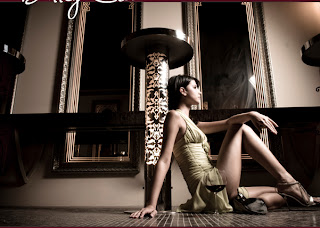By: Grecia A. Garcia
There is an air of sophistication which permeates from 25-year-old Jose Hernandez. Observing him dressed in a tailored, royal blue pinned striped suit, his demeanor is scented with elegance and cologne (perhaps Gucci or Hugo Boss). Sitting crossed-legged in a velvet burgundy lounge chair at Java Beach on Judah and La Playa, Hernandez is the definition of a self -made man who overcame a struggling, deprived life. He lived in a 14- foot trailer in the scalding hot city of El Centro, California, where he was constantly reminded that his next meal was not assured. Hernandez’s parents had to put their dreams on permanent hold and moved on from their once glorious careers.
Hernandez currently holds the position of a public relations representative for Ford Dealership – incorporating his passion for Baja- off-roading trophy trucks and the Ford Mustang Rouge into his definitive dream job. Now an accomplished educated man who is a first generation Mexican American, Hernandez reminisces on those incomprehensible moments when he felt invisible and no one cared.
Could you describe a day in your childhood?
First, I would wake up and wonder whether my dad would sell enough radiators to eat dinner that day. I also remember a lot of fighting between my mom and dad over money every morning. Shortly after getting ready for school, I would open the door of our R.V. and run down the R.V. park to make my school bus.
What was living in an R.V. park like?
No luxury that’s for sure. I just remember how small it was and I can’t believe my family of six was able to live in that small trailer. I remember both my sister and I would sleep on the top bunk and my parent would sleep on the bigger bed (laughs). My parents slept on the kitchen table, which converted into a bed at night.
What did your parents do for a living?
My dad used to sell radiators and my mom was an architect but stopped working after she had my younger brother. So as a child, my dad was the primary bread giver. My dad was a former runner, and a good one too, but gave all those dreams up when my mom got pregnant with me. It’s almost like he had the tools to succeed but he never did.
What are your parents jobs now? And what are you feelings about their past decision to give up their dreams for their children?
My mom is one of the smartest women I know and it makes me angry every time I think about her sacrifice for us. My mom was very successful before she had us but she said she had to stop because my sister and I were too close together in age. My dad is very talented...He was one of the best runners Mexico has ever seen in the 1980’s, and he had to give all that up to make some money. Now my dad works as an auto body painter and my mom is a car detailer.
How have your parents' trials and sacrifices prompted your own life decisions?
My father has been a big inspiration to me. My dad would take me on runs when I was a little boy and he would enter me in local races. I was pretty talented from the beginning and from there on out I never stopped. Running is my passion and my escape. Running helped me get my scholarship to Chico State and it paid for my college tuition, so I’m very grateful for that.
Did you feel any pressure while in college to make sure that you never lost your ambition to succeed?
Of course I was always training because I always feared losing my scholarship. I worked harder than the runner to my left and I made sure I was on that traveling team. I don’t know what would’ve happened if I got injured.
What happened after you graduated from Chico State and how did you come to work your current position at Ford?
I went back home to El Centro and I got my first interview at Ford. I started as an Internet coordinator. My first step was to get a job because I had no money and I needed some money to get through. I was given the opportunity to get an interview through mutual friends. I was always a car fanatic but getting this job initially wasn’t that big of a deal for me, I was just happy I was given an opportunity at the time. I always thought I would be working with Jeff Gordon, but working with Ford has given me great connections.
I’m a public relation representative for Ford and I’m currently moving towards the international aspect of the company. I love my job and I’m just thankful. Coming from a poor upbringing I have to say I’m still scared of being poor again. I always think about those times when I would pray to God to help me get out of that life, and it brings me to tears. I just want to work and work and be happy, finally.”
"I remember both my sister and I would sleep on the top bunk and my parent would sleep on the bigger bed (He laughs in an awkward matter). My parent slept on the kitchen table, which converted into a bed at night."
photo courtesy of Ford.com






